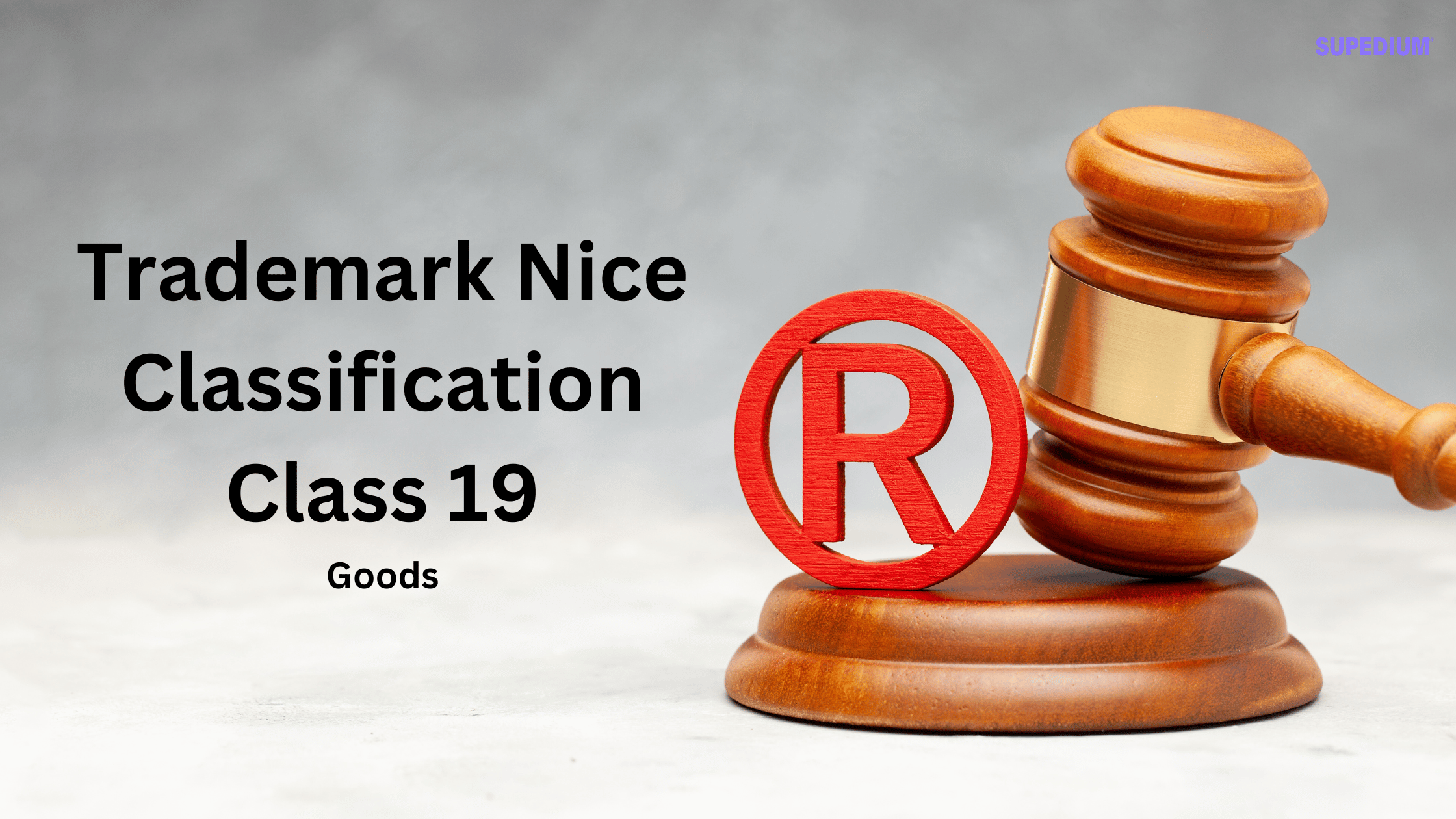Table of Contents
![]()
I. Introduction
Trademark classifications play a crucial role in the identification and protection of goods and services within specific industries. The Nice Classification system, established by the Nice Agreement in 1957, categorizes products and services into 45 classes. Class 19 is particularly important in the building and construction sectors, focusing on materials that are not made of metal. This article delves into the details of Class 19, highlighting the materials included, their applications, and the exclusions that businesses should be aware of.
II. Overview of Class 19
A. General Characteristics
Class 19 is primarily concerned with materials used in building and construction that are not of metal. This classification reflects the diverse range of products necessary for constructing structures, landscapes, and various facilities. Understanding the materials encompassed within this class is essential for manufacturers, builders, and trademark applicants alike.
B. Main Categories within Class 19
The classification includes several categories, each vital for different aspects of construction and architectural design. Recognizing these categories helps stakeholders navigate trademark registration and compliance more effectively.
III. Included Materials and Products
A. Semi-worked Woods
Semi-worked woods, such as beams, planks, and panels, are fundamental to building structures. These materials provide the necessary strength and versatility for various construction projects, ranging from residential homes to commercial buildings.
B. Wood Veneers
Wood veneers are thin layers of wood, often used in furniture and interior design. They provide aesthetic value while allowing for efficient use of high-quality timber, making them a popular choice in building applications.
C. Building Glass
Building glass encompasses various products, including glass tiles and insulating glass. Safety glass is also crucial for modern architecture, providing both transparency and security. The use of glass in construction enhances natural lighting and energy efficiency.
D. Natural Stones and Aggregates
Natural stones like granite and marble, along with aggregates such as gravel, are essential for both structural integrity and aesthetic appeal. These materials are often used in flooring, countertops, and exterior facades, offering durability and timeless beauty.
E. Terra-Cotta
Terra-cotta is a versatile building material known for its clay-based composition. It is commonly used in roofing tiles, bricks, and decorative elements, providing excellent insulation and aesthetic appeal.
F. Non-Metal Roofing Materials
Class 19 includes non-metal roofing materials, especially those incorporating photovoltaic cells. These innovative roofing solutions are integral to sustainable building practices, allowing for energy generation while serving as a protective barrier.
G. Monuments and Statues
Materials used for monuments, such as stone, concrete, and marble, are also classified under Class 19. These items often hold cultural significance and are crucial for commemorating historical figures or events.
H. Transportable Buildings
Transportable buildings, including aquaria and porches, offer flexibility in construction. These structures can be relocated or modified easily, catering to changing needs and preferences.
I. Other Notable Inclusions
Additional materials within Class 19 include geotextiles, coatings considered building materials, and scaffolding made from non-metal materials. These items support various construction processes and enhance the efficiency of building projects.
IV. Exclusions from Class 19
A. Overview of Materials and Products Not Included
While Class 19 encompasses a wide range of materials, certain products are explicitly excluded. Understanding these exclusions is vital for businesses to ensure compliance with trademark regulations.
B. Examples of Excluded Items
- Cement Preservatives and Waterproofing Preparations: These fall under Class 1, focusing on chemical products rather than building materials.
- Wood Preservatives: Classified under Class 2, these products protect wood but are not materials for construction.
- Statues and Art in Other Materials: Works made from common metals, precious metals, wood, wax, plaster, plastic, and ceramics are categorized differently (Classes 6, 14, 20, and 21).
- Specific Types of Pipes: Certain non-metal pipes, especially those related to sanitary installations, are classified under Class 11.
- Substances for Insulating Buildings: These materials are classified under Class 17, focusing on insulation rather than structural components.
C. Importance of Understanding Exclusions for Compliance
Recognizing what is not included in Class 19 helps businesses avoid potential trademark conflicts and ensures proper classification of their products.
V. Practical Applications of Class 19 Materials
A. Building Construction and Architectural Design
Materials classified under Class 19 are integral to construction and design. From creating the framework of a building to providing finishing touches, these materials contribute to both functionality and aesthetics.
B. Urban Planning and Landscaping
Natural stones, semi-worked woods, and other materials are essential for urban development and landscaping. They enhance public spaces, contributing to the overall environment and livability of urban areas.
C. Innovations in Sustainable Building Materials
The inclusion of non-metal materials, especially those that incorporate technology like photovoltaic cells, highlights the ongoing trend towards sustainable construction. As the industry evolves, Class 19 will likely see further innovations aimed at reducing environmental impact.
VI. Conclusion
Class 19 of the Nice Classification is essential for understanding the wide range of materials used in the building and construction sectors. By recognizing the included products, their applications, and the exclusions, businesses can navigate trademark registrations more effectively. As the demand for sustainable and innovative building materials grows, Class 19 will continue to play a vital role in shaping the future of construction.
Share This





Be the first to comment